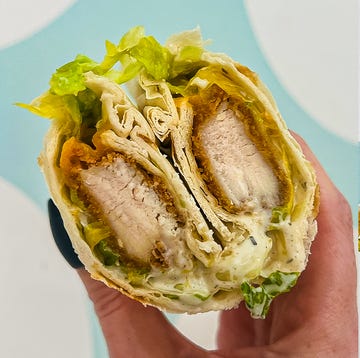We've all been there. You're headed into your favorite liquor store on a Friday night and you've just stood in the aisle wondering which bottle of brown to pick up. On one shelf, there's a robust choice of bourbon varieties, while another includes nothing but whiskey. Then as you look a bit closer to the shelf with of bourbon, you notice that the name listed includes the word whiskey, too. Confused much? You're not alone.
If this has happened to you, you've probably found yourself pondering just why bourbon and whiskey—though both brown liquors and often quite similar in taste—are called something different. And while technically you are kind of right about them being baaasically the same, there is a very big difference between the two. Let's start from the beginning.
To start, you'll need to know what whiskey actually is. According to MasterClass, whiskey—or whisky, as it is sometimes spelled—depending on where it's origin of production—is an "amber-colored distilled spirit made out of fermented grain." Meaning, it could often be a mixture of rye, wheat, corn, and/or barley. At minimum, whiskeys (which are usually aged in wooden casks prior to being bottled) have a 40 percent ABV amount and can taste anywhere (or everywhere) between warm, sweet, spicy, toasty, or even caramel-like. Sounds simple, right? Well, there's much more to it than that.
Now that you know the basics of what whiskey is, it's important to know that there are a plethora of whiskey varieties. And bourbon—as you may have guessed based off of taste and sometimes name—is one of them. So what classifies a particular whiskey to have the honor of also being a bourbon? That depends on the fermented grains we discussed above.
Commonly produced in Kentucky, bourbon whiskey must contain at least 51 percent corn in what distillers call the mash bill (which is that mixture of fermented grain that is used to create whiskey) to have the word "bourbon" added to its title. The amount of corn isn't the only thing that will classify whiskey as bourbon though. By law, bourbon must be aged in newly charred white oak barrels so that it can achieve the traditional nutty and sweet flavor profile you know and love. And, more importantly, it must be produced in the United States. Additionally, the mash for each bourbon whiskey has to be distilled at 160 proof or less and placed into that mandatory new oak barrel at 125 proof or less. Truly quite the process!
Another thing you may want to know about bourbon is that it has no specified duration for its aging period. That means bourbon that was aged for just three months can be bottled, sold, and consumed without any issues. If it's straight bourbon whiskey, however, the mandatory minimum amount of aging time is two years. And, just like regular whiskey, bourbon—no matter the type—can only be bottled with a minimum of 40 percent ABV.
In a nutshell, the one thing you should always remember is that while all bourbon is classified as whiskey, not all whiskey can be considered a bourbon. Any way you have it, though, be sure to drink it responsibly.












